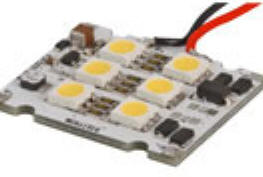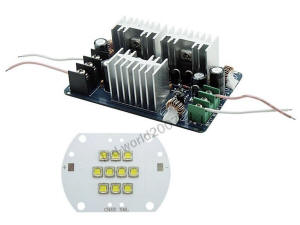Lights
LED's are quickly making their way into the deep sea and
replacing the commonly used halogen lights. Newer LED's have
much higher Lamination/Watt power consumption and their color is now
a bright white and not yellow. The spectrum of light is often
measured in the Color Rendering Index (CRI) where sunlight is 100,
LED's are now as high as 90 and competing with halogen lights that
have a CRI of 100.

12V, .89W, 87 lum, Lum/Watt: 110
Cost $12, $/Lum 0.12 |
|
The OpenROV group uses $12, 98 lumen LEDs that simply connect to
a 12 volt DC battery. They make a simple and elegant solution
of shallow water.
Cost per lumen: $12 / 98 = $0.12
Lumen per Watt: 98 / .89 = 110

In
12V, 10A. Out 36V, 3A, 10,000 lum,
83.3 Lum/Watt
Cost $84, $/Lum: 0.0084
>80CRI, Color 6000K |
|
For deeper water were no sunlight will reach, more light is better.
The technology is constantly changing, but for now Cree build some
of the brightest and most efficient LEDs available.
These high power LED's require a constant current driver circuit to
power them but a 1 inch area of LED's can produce 10,000 lumens.
Matching the driver to the LED's requires some electrical knowhow,
but eBay yielded relatively inexpensive driver and LED
arrays bundled together. Be warned that Chinese often sell LED's
that are the 3rd or 4th pick off the production line. Meaning
that while the 1st pick produces the expected 10,000 lumens, the 4th
will be closer to 8000 lum.
Cost per lumen: $0.01 ( at 8000 lum )
Lumen per Watt: 83.3
The down side to these 10,000 Lumen LED's is that the DC input
driver does not allow for the LED's to be dimmed. When near a
target it there will likely be too much light for the cameras.
The other problem is that like form LED radiates in a wide 110
degree cone, eliminating particles suspended in the water column
close to the camera lens. The light reflecting of these small
particles is called back scatter and it blurs the cameras ability to
see our further. To compensate for these drawbacks we
have ordered some reflective cones to focus the light into narrower
beams so that it can light the target by reflecting light off the
bottom near the target.
|